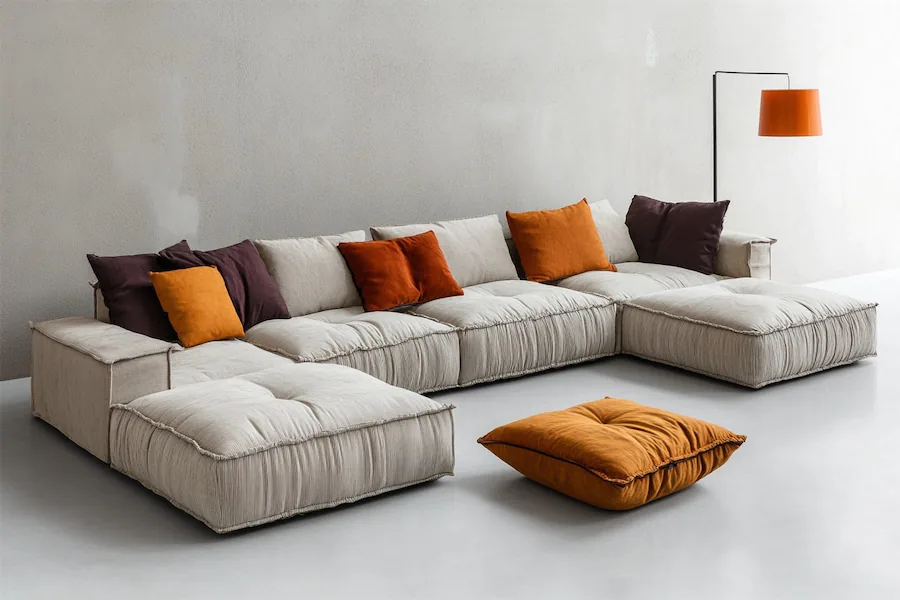A Modular Sofa, also known as a sectional sofa, is a versatile piece of furniture composed of multiple independent sections or modules. These modules can be arranged in various configurations to suit different spaces and functional needs, offering flexibility in both design and utility.
History and Origins of Modular Sofas
The concept of modular furniture gained prominence in the mid-20th century, aligning with the rise of open-plan living spaces that demanded adaptable furnishings. Designer Harvey Probber is credited with pioneering modular seating in the 1940s, introducing sectional pieces that allowed for customizable arrangements. This innovation marked a departure from traditional, static furniture designs, catering to the evolving needs of modern interiors.
Key Features of Modular Sofas
- Customizability: Modules can be reconfigured to create various seating arrangements, such as L-shaped, U-shaped, or separate seating areas, adapting to different room layouts and personal preferences.
- Scalability: Additional modules can be added or removed to adjust the size of the sofa, accommodating changes in living space or seating requirements.
- Variety of Designs: Available in numerous styles, fabrics, and colors, modular sofas can complement diverse interior aesthetics, from minimalist to eclectic.
- Functional Add-ons: Some modular sofas include features like built-in storage, recliners, or sleeper modules, enhancing their practicality.
Applications of Modular Sofas
- Residential Spaces: Ideal for living rooms, family rooms, or entertainment areas, modular sofas provide adaptable seating solutions that can evolve with changing needs.
- Commercial Environments: In offices, hotels, or lounges, modular seating accommodates varying group sizes and activities, promoting a flexible and collaborative atmosphere.
- Small Apartments: For compact living areas, modular sofas can be configured to maximize space efficiency, often incorporating storage or transforming into beds.
Considerations When Choosing a Modular Sofa
- Space Assessment: Measure the available area to determine the appropriate size and configuration of the sofa, ensuring it complements the room without overwhelming it.
- Lifestyle Needs: Consider the primary use—such as hosting guests, family relaxation, or multifunctional purposes—to select suitable features and fabrics.
- Quality and Durability: Evaluate the construction materials, upholstery, and craftsmanship to ensure longevity, especially in high-traffic households.
- Aesthetic Compatibility: Choose a design that harmonizes with existing décor, considering elements like color schemes, textures, and overall style.
Conclusion
Modular sofas epitomize the blend of functionality and style in contemporary furniture design. Their adaptability to various spaces and needs makes them a favored choice for those seeking both comfort and versatility in their living environments.
